In football, injuries are as inevitable as death and taxes.
Attrition affects every team. Ask any coach, any player, anyone who closely covers or watches the game, quality depth throughout your roster is critical to sustained success – over the course of a season, over the course of a coaching tenure.
For Oregon, the 2016 and 2017 seasons were largely marred due to a lack of depth. The 2016 season saw the entire defense deal with significant injuries, while in 2017, a promising start to the year was upended by the broken collarbone suffered by quarterback Justin Herbert five weeks in.
With a healthy Herbert set to return, and coming off an offseason filled with tremendous optimism, the Ducks enter the 2018 season as a team with arguably as much potential upside of any in the entire country. However, while overall team depth is improving, there is valid concern that it’s not quite where it needs to be in order for the Ducks to be considered a legitimate contender for the Pac-12 Championship.
Below we assess the depth of the Oregon defense; a rapidly improved unit that’s coming off a dramatic one-year turnaround under second-year defensive coordinator Jim Leavitt. To gage where the Ducks are at depth wise, we’ll use the number 24 as the benchmark in terms of the number of players a defense needs to generally count on in order to play at a relatively high level week-in and week-out. We’ll also break the Ducks’ depth down into four tiers: guys who have done it, guys we’re optimistic can do it (at least occasionally), guys we need to see prove it, and guys we know next to nothing about.
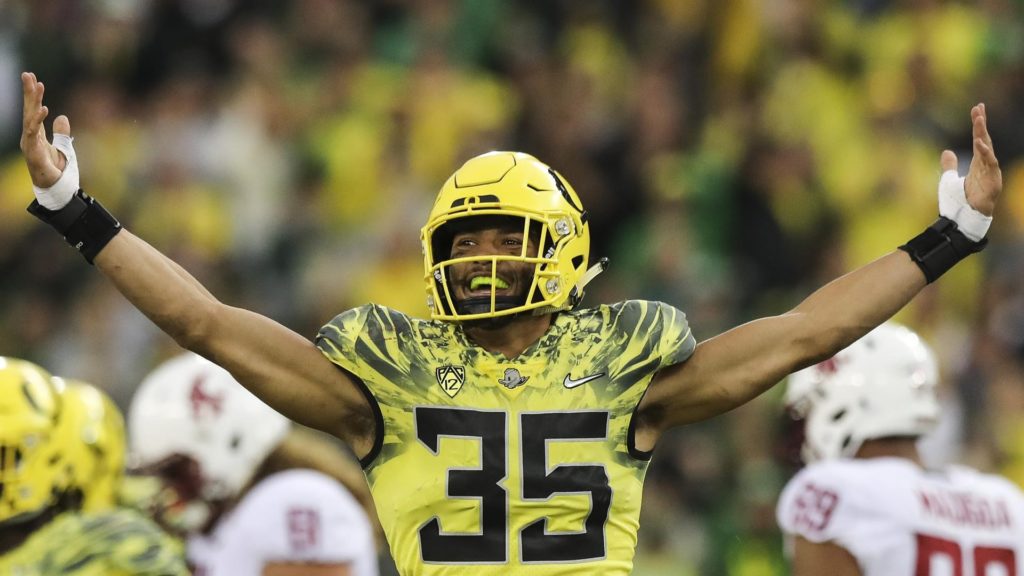
Guys who have done it: (8)
DL Austin Faoliu (So.)
DL Jordon Scott (So.)
DL Jalen Jelks (RSr.)
LB Justin Hollins (RSr.)
LB Troy Dye (Jr.)
LB La’Mar Winston (Jr.)
CB Thomas Graham (So.)
DB Ugo Amadi (Sr.)
The Ducks have multiple pillars at multiple levels of their defense. In terms of proven talent, that’s eight of 11 defensive starters comprising a backbone that has a quality mixture of senior and underclass talent – meaning the Ducks are well positioned for success both in the present and the future. Truthfully, it wouldn’t be a shock to see most, if not all of these players find their way onto an all-conference team of some sort by season’s end. Dye and Jelks are legitimate Pac-12 Defensive Player of the Year candidates on their own.
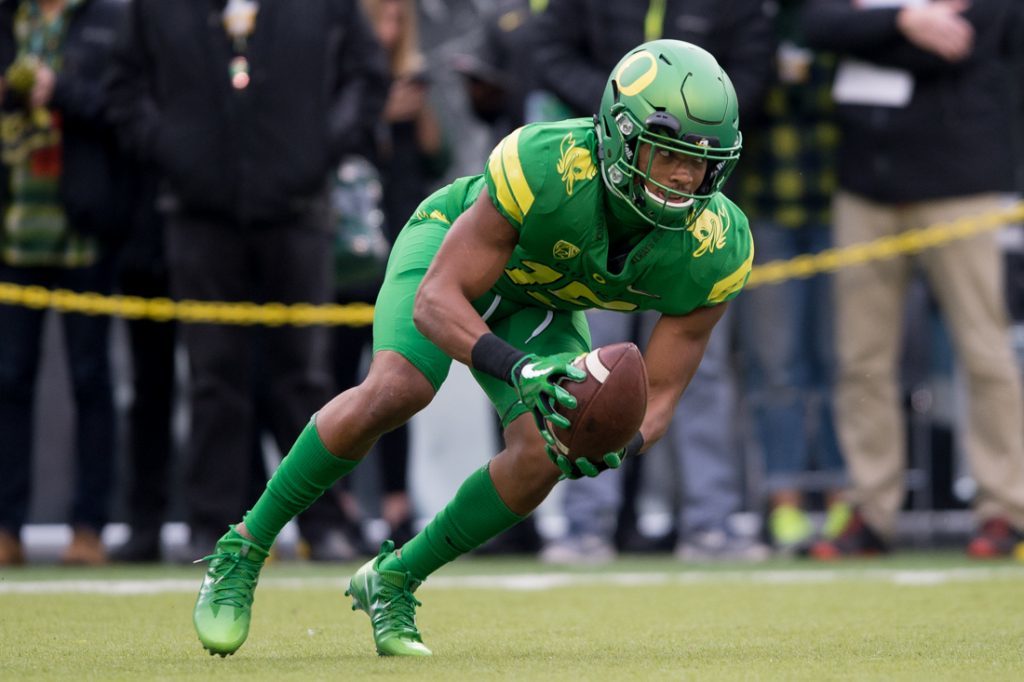
Guys we’re optimistic can do it: (10)
DL Gary Baker (RJr.)
LB Kaulana Apelu (Sr.)
LB Isaac Slade-Matautia (RFr.)
LB Keith Simms (RSo.)
LB Adrian Jackson (Fr.)
CB Deommodore Lenoir (So.)
DB Nick Pickett (So.)
DB Jevon Holland (Fr.)
DB Brady Breeze (RSo.)
DB Mattrell McGraw (RSr.)
The supporting cast residing in the tier below Oregon’s front line stars is encouraging. By all accounts, Baker, Slade-Matautia, Simms, and Lenoir have star potential coming off impressive offseasons, while guys like Apelu, Breeze, Pickett, and McGraw each have more or less one full season of consistent playing experience under their belts. Meanwhile, Holland and Jackson have been consistently mentioned as two of the most impressive freshmen newcomers on the team since arriving this summer. The only real concern with this group is the lack of depth along the defensive line, where Baker is the only member of the group (beyond the big three) who inspires decent confidence at this stage.
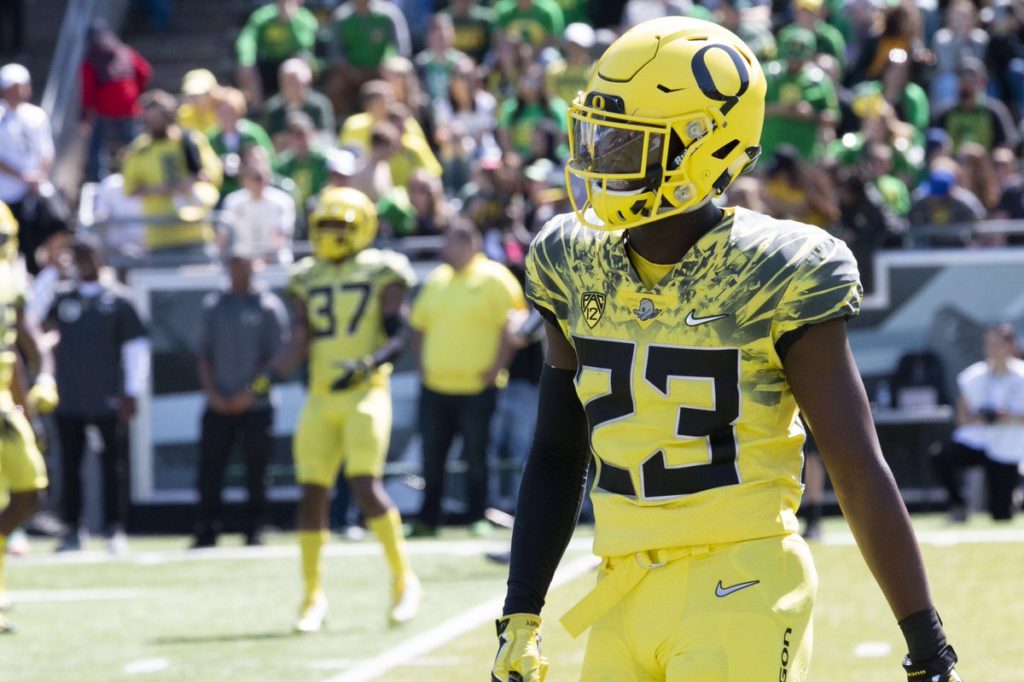
Guys we need to see prove it: (7)
DL Drayton Carlberg (RJr.)
DL Popo Aumavae (RFr.)
DL Bryson Young (Jr.)
LB Sampson Niu (So.)
CB Verone McKinley (Fr.)
CB Kahlef Hailassie (Fr.)
DB Steve Stephens (Fr.)
The performance of the players in this group will largely determine the level of success the Ducks have on defense this season. With 18 defenders in the top two tiers that can more or less be relied upon, the third tier will ideally need to have at least six players emerge as quasi-regular contributors in order to confidently fulfill our 24-player benchmark. The play of Carlberg and Aumavae has been trending up as fall camp comes to a close. The same can be said of Niu, McKinley, Hailassie, and Stephens, who each seem to be squarely in the mix for regular playing time despite Niu being only player with collegiate level playing experience (6 games). As a fan, this is the group you’ll want to concern yourself with the most.
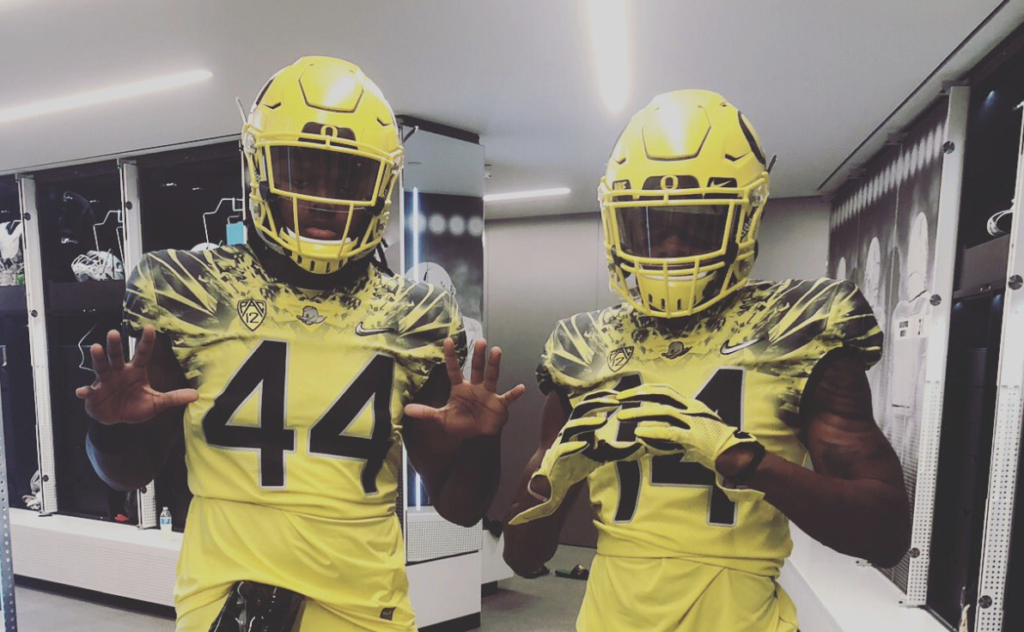
Guys we know next to nothing about: (8)
DL Sione Kava (Jr.)
DL Gus Cumberlander (RJr.)
DL Andrew Faoliu (Fr.)
LB MJ Cunningham (Fr.)
LB D.J. Johnson (So.)
LB Andrew Johnson (Fr.)
CB Haki Woods (Sr.)
DB Billy Gibson (So.)
In short, anything the Ducks receive from this group this season should be considered gravy. Kava, Cunningham, Woods, and the younger Faoliu are all newcomers who have had limited mention in practice reports, thus it’s hard to gauge just how much they’ll factor into weekly game plan this season. Cumberlander and Gibson have appeared in 24 career games combined, though neither has yet to make a notable impact. Linebackers D.J. Johnson and Andrew Johnson will redshirt this season due to NCAA transfer rules and injury, respectively.
The Final Verdict:
The Ducks have the depth to make a championship run, but it’s paper thin. Though the quality of depth on the whole has improved markedly from last season, it’s still not in a place where the Ducks can sustain a rash of injuries and confidently overcome them. More so than in most years, Oregon’s ability to avoid significant injuries (particularly along the defensive line and cornerback) will determine how high this unit can fly. As previously mentioned, the play of the “prove it” tier will be particularly critical. Building upon their fall camp momentum, if they can collectively provide enough consistency in spots, or even hold the line if/when they’re pressed into extended duty, Oregon’s return to championship glory could come sooner than many people think.
Do the Ducks have enough offensive depth to be championship caliber?

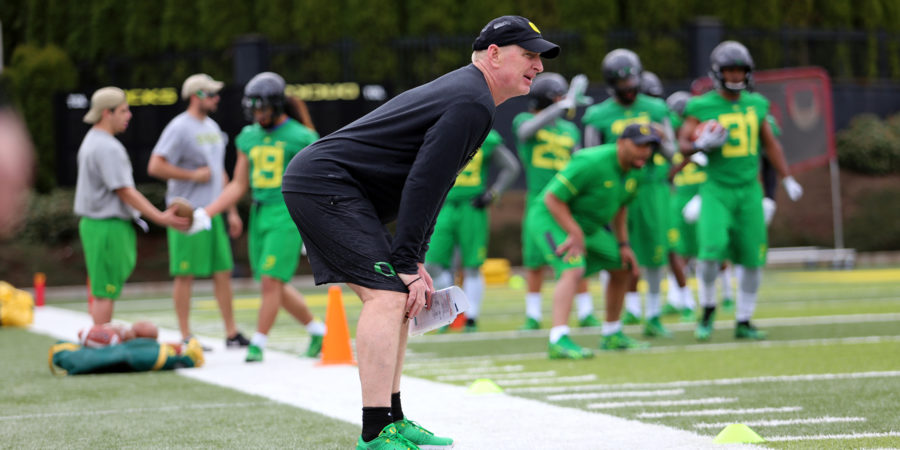
Good job with this analysis. You rather than anyone from the 247 crew ought to get the OregonLive gig if interested. You can write.
Haha I appreciate that, Buddy. Those guys do a great job.
Thank you for the support!
Though the new redshirt rule is a benefit for all programs, it is especially advantageous for the 2018 Ducks. It definitely gives an extra boost to those programs with depth issues and cupcake nonconference schedules – which bodes well for Oregon. Therefore, the players that “need to prove it” or “we know nothing about” should be categorized as “can contribute” or “redshirt” by the time we play Stanford.
I really hope coaches allow Woods, Young, and Niu to play significant time during the second half of our nonconference games. We might not be hearing much about these players from practice reports due to the allotted time allowed to media – as opposed to being lower on the depth chart. But if its the later, I hope they are given more opportunities to prove their worth during games – because we can really use their depth. The same can be said with offensive players such as Moore, Davis, and Dillon. (The focus being on players who won’t redshirt but also who seem to have been passed on the depth chart by underclassmen)
I think that’s a good point, Kris.
Oregon’s schedule this year is one of the easiest – if not the easiest – schedules over any Power 5 team, which means there should be ample opportunity for both the staff to assess the talent in live game situations, and for players to find their stride against an opponent wearing a different color jersey. How the staff manages the depth in those games will be something to keep an eye on.